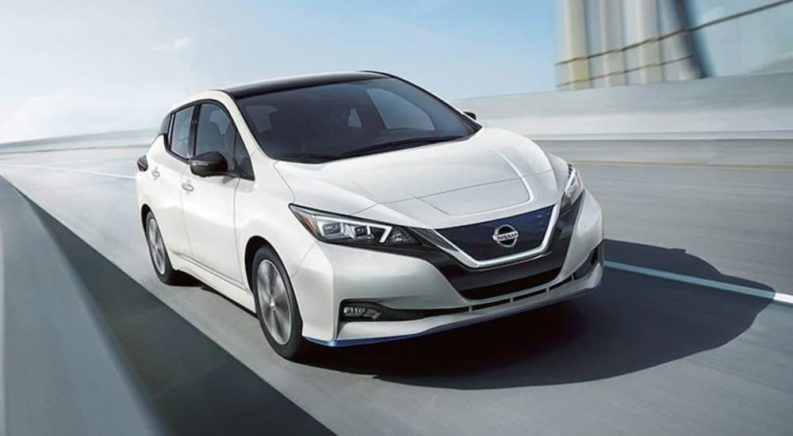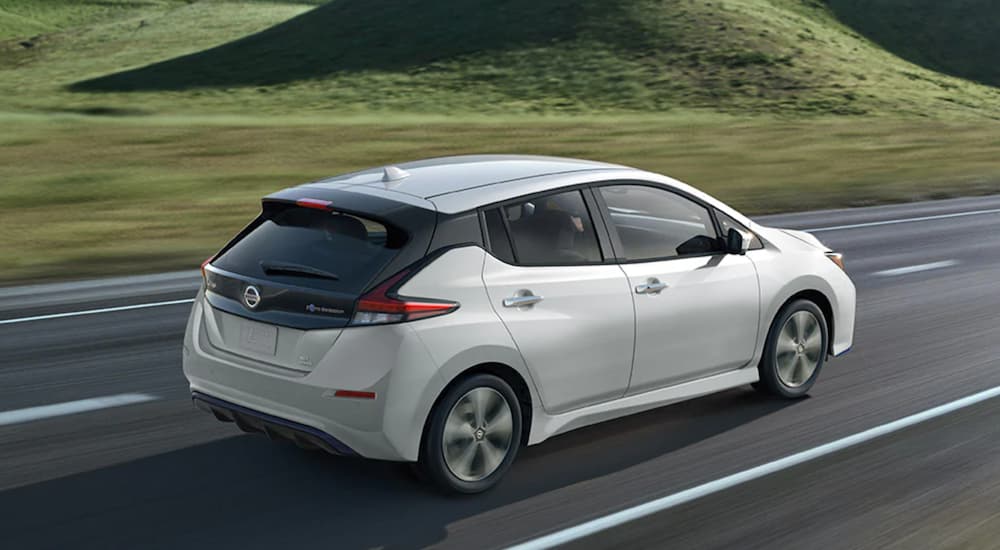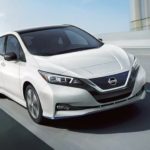If we were to take a bird’s eye view of the automotive industry as a whole and examine it year by year, we would bear witness to a timeline with many peaks and valleys. We would also take notice of trends coming and going and new technologies appearing and becoming a part of the industry. This somewhat describes the rise and ever-growing popularity of the electric vehicle and several manufacturers changing their lineups to go green and reduce the number of emissions entering the Earth’s atmosphere from the use of the internal combustion engine.
When it comes to innovation, few manufacturers have come close to possessing the drive and determination of Nissan. The Nissan Leaf, one of the most impressive EVs on the road today, is just one more feather in the cap of a company that’s never ceased to amaze its customers with its brand of technological thinking. If you’ve been considering joining the ever-growing EV revolution, then what we present here today might have you searching for a Nissan dealership to test drive a Leaf.
2010: The Early Days of Innovation in the New Millenium
The saga of the Nissan Leaf began in 2010. A decade had passed into the new millennium, the fears of the Y2K bug were all but a distant memory, and the world looked forward with optimism and wonder as the future took hold of the entire planet with new surprises and innovations that both impressed and awed. It’s in this climate that Nissan made an announcement that completely changed the way people thought of the EV. While hybrid vehicles were certainly nothing new at that point, no one could have possibly foreseen what was about to occur.
The manufacturer unveiled the 2011 Nissan Leaf. A battery-electric vehicle, or BEV, the Leaf was an all-electric automobile available to the average consumer, going head to head with the more expensive models sold by Tesla. Even before the Leaf made an official appearance in Canada, the hype machine was already talking about a major announcement in the works. The “EV-02”, a prototype Nissan Cube outfitted with an electric powertrain, had already been making appearances, and rumours were flying that a ground-up electric vehicle was being developed. While other manufacturers were also working on their first electric vehicles, the Leaf would soon surpass all of them and become the first affordable mass-produced EV.
Taking a hint from the popular Nissan Versa, the Leaf had the shape and style of a five-door hatchback to maximize storage with an available 680L of cargo space. Most impressive about the Leaf’s debut was its range, which allowed the vehicle to travel 117 km on a full charge. And as the world would soon see, this number would only get better as time marched on. It didn’t take long for the Leaf to make a sizable impact, as the vehicle received high marks from industry critics and received awards such as European Car of the Year and World Car of the Year. In fact, the entire first year of production for Canada sold out in just two hours.

2013-2016: Time Waits for Nobody, and Neither Does Progress
As the first affordable EV on the market, the Nissan Leaf became Canada’s top-selling electric car, a distinction that it would trade back and forth with Tesla models for years to come. Demand had risen so much that production had expanded to plants located in Japan, the United States, and the United Kingdom. Aside from sales steadily climbing, which attested to the ever-growing popularity of the Leaf among consumers wanting to “go green,” the range of the vehicle increased during this time as well. Improvements for the 2014 model increased the range to 135 km, an astonishing figure for the day.
By the end of 2016, sales of the Leaf in Canada had reached the 4,400 mark, an unprecedented accomplishment for a vehicle propelled by an electric powertrain. While EVs were still a niche market, it was more than apparent that the Leaf was climbing the ladder and was now a viable threat to the reign of the internal combustion engine. When the Leaf first appeared on the market, Popular Mechanics Magazine seemed to issue a prophetic statement when they described the vehicle as “hitting the mainstream like none of its predecessors.” The following year would only serve to reinforce the statement from the publication.
2017-Present: A New EV for a New Generation
A popular saying is, “you can’t reinvent the wheel.” While this certainly might be the case, you can certainly improve the vehicle that drives upon four of them. 2017 marked the second generation of the Leaf, which speaks to how well Nissan had crafted the vehicle when it had debuted less than a decade prior. The redesigned Leaf placed an emphasis on giving drivers a comfortable and quiet ride, thanks to a new electric motor that was quieter while in use yet still managed to generate an impressive 147 hp––a full 40 horses more than the first-generation model. This updated powertrain also didn’t take away from the Leaf’s greatest attribute; its range. In fact, the new Leaf had the ability to travel 172 km on a single charge.
When Nissan began to get ready for the 2020 model year, the world was shaken to its very foundations by the onset of a global pandemic. In an age where many worried about staying safe in an environment of uncertainty, Nissan focused on outfitting the Leaf with a wide variety of standard safety features, further illustrating the brand’s dedication to both its customers and to technological innovation. Automated emergency braking, blind-spot monitoring, and more were standard features included in Nissan’s Safety Shield 360. Also available on select trim levels were adaptive cruise control and semi-autonomous driving. With a new maximum range of 363 km when equipped with the optional 62 kWh PLUS battery pack (first introduced for 2019), Nissan once again proved that it was a manufacturer willing and able to go the distance for its drivers.
The Future and the Possibilities it Holds
It’s absolutely astounding when one takes into consideration how much time, effort, and innovation Nissan have placed into the Leaf. Year by year, we’re left completely astounded by the longer ranges, more features, and exquisite performance that Nissan provides consumers with. For some manufacturers, it takes decades to achieve the sort of perfection that Nissan has accomplished in a little over a decade. Even today, over a decade after the Leaf first made its appearance in Canada, very few manufacturers have an EV offering that is more compelling in their lineups.
The possibilities for the future are always unknown, and they’re also without any discernible or comprehensible limitations or boundaries. As the EV revolution continues and more and more people chip in to do their part to take better care of the planet we all call home, we’re all eagerly awaiting what Nissan has planned next. If the brand has initiated so much change in a little over a decade, just imagine what it will be capable of doing over the course of a few more decades.





